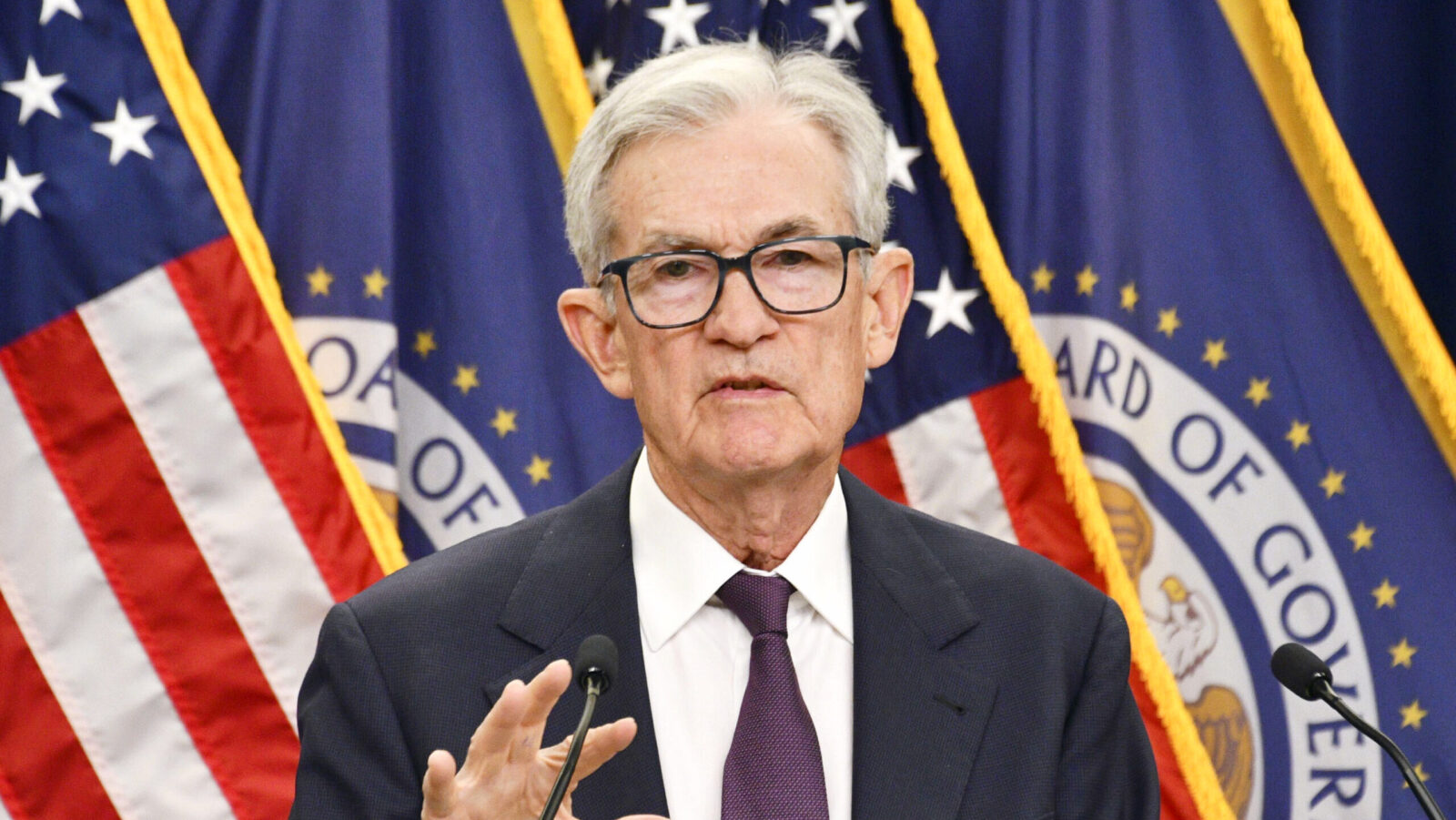Good morning.
In movie terms, it would be The Good, the Bad and the Ugly, as in a three-way shootout. Paramount, Comcast and Netflix are putting together offers to buy rival entertainment giant Warner Bros. Discovery ahead of a November 20 deadline, The Wall Street Journal reported Thursday. Founded just three years ago via merger, the David Zaslav-led Warner has struggled, most recently posting a bigger-than-expected $148 million loss in the third quarter.
Meanwhile, Warner is still moving ahead with plans to split into two companies, one for its streaming services and production studios and the other for its cable networks. Paramount is reportedly interested in the whole enterprise, but Netflix and Comcast are eyeing the prized studio and streaming assets, which include HBO Max. Television writer Chuck Lorre, who co-created The Big Bang Theory, jokingly offered to buy the floundering cable assets for $2,700 earlier this year. He may have a shot yet.
*Presented by Global X. Stock data as of market close on November 13, 2025.
The Global X Artificial Intelligence & Technology ETF (AIQ).
‘Misguided’ Disney Selloff Overlooks House of Mouse’s Streaming Might
Investors aren’t exactly seeing a happily ever after, not after Disney reported fourth-quarter revenues that missed analyst expectations. The stock plunged roughly 8% in trading on Thursday as Wall Street digested disappointing figures from the linear TV and box office side of the business.
The dip comes after a years-long struggle for House of Mouse stock. After surging to an all-time high in 2021, its price has been ping-ponging between $80 and $125 since 2022 as the company struggles to convince investors it can survive cord-cutting.
Wish Upon a Streaming Star
Despite Disney’s recent troubles, “2026 is setting up to be a good year,” says Morningstar senior equity analyst Matthew Dolgin. He adds that the stock market’s reaction this week was misguided, spurred by weakness in the non-streaming entertainment revenue, which is no longer a critical driver of profit.
As Disney celebrates three years of CEO Bob Iger’s un-retirement, its fourth-quarter figures proved it’s still a worthy opponent to streaming giants like Netflix and Amazon Prime Video:
- Quarterly operating income for the streaming business increased 39% to $352 million. Disney+ added 3.8 million subscribers.
- “The company has slowly been turning around to become much more dependent on streaming, as opposed to linear,” Dolgin says. “We’ve seen continued strength in the areas that are most important to the future.”
Operating income of $1.9 billion in the resorts, cruises and theme parks area of the business grew 13% from a year earlier. While licensing revenue — which is based on theatrical film release — fell, that was in comparison to a robust fourth quarter last year, featuring hits like “Inside Out 2” and “Deadpool & Wolverine.”
Blackout: Disney reported earnings in the shadow of an ongoing distribution battle with Google’s YouTube TV, which has resulted in Disney-owned networks, including ESPN and ABC, being unavailable on YouTube TV since the end of October. Iger said during the earnings call that the company is “working tirelessly” to reach a deal. The Athletic recently reported that one obstacle is an agreement on how much to pay for Disney’s non-sports networks, including Freeform and FX.
Your Playbook For The Next Era Of ETFs
The ETF world is shifting, from active strategies to new themes and sectors rising fast.
That’s why we built ETF Upside, the resource that breaks down the trends shaping the future of exchange-traded funds.
Every Monday and Wednesday, ETF Upside delivers timely insights and actionable takeaways to help you make smarter investment decisions, whether you’re an individual investor, an advisor or part of an institutional team.
A December Rate Cut? Economists Still Expect One. Markets, Not so Much

Heads, we slow inflation; tails, we stoke employment.
With the record-long government shutdown over, it remains unlikely that Federal Reserve officials will have full access to the backlog of economic data at their next policy meeting in early December. Consequently, the odds for a rate cut at that meeting have plummeted on prediction markets. Economists, meanwhile, are still projecting a 25 basis-point cut. And markets? They seem to be following the masses, not the experts.
Fed Up
Fed Chair Jerome Powell just can’t catch a break. At October’s Federal Open Market Committee meeting, Powell faced dissent on both sides, with some fellow central bankers wanting to maintain rates and others calling for an aggressive 50 basis-point cut. Ultimately, the Fed split the difference, cutting rates by a quarter point. This time, the central bank will be flying partially blind. Previously, the question was when missing government data would be available. Now it’s looking more like a question of if.
On Wednesday, the White House said that crucial jobs and consumer price index figures for October are now unlikely to be released at all. Economists are urging the Bureau of Labor Statistics to skip ahead to November, as it’s the more relevant data for the Fed’s December 9-10 meeting anyhow. When addressing the prospect of missing data at a press conference in late October, Powell said, “What do you do when driving in a fog? You slow down.” Yesterday, investors took him at his word:
- Traders are now projecting a roughly 50/50 chance of a quarter-point rate cut in December, according to CME Group’s FedWatch tool, down from a 67% chance just days ago. Predictions markets Kalshi and Polymarket have similarly seen odds collapse to a coin flip, after both showed odds of a cut as high as 90% in late October.
- Economists, on the other hand, are more bullish; 80% of respondents in a Reuters survey published Wednesday predicted a quarter-point cut. The survey, however, was likely conducted before the likelihood of missing data was completely clear.
“The general sense is the labor market still looks relatively weak and that’s one of the key reasons why we think the FOMC will continue to deliver that December cut,” Abigail Watt, US economist at UBS, told Reuters.
Market Price: Increased skepticism over a rate cut could also contribute to a mini market pullback. The S&P 500 dropped 1.6% on Thursday, while the tech-heavy Nasdaq Composite Index fell nearly 2.3% and the Dow Jones Industrial Average slid 1.65%. Translation: Everyone might be heeding Powell’s advice and tapping the brakes.

Engineering & Construction Sector Is Entering a Supercycle. Many assumed the race for AI dominance would be decided by computing power, including faster chips, larger servers and more data. But it’s now clear that the real bottleneck lies outside the four walls — in the physical infrastructure that makes these facilities possible: substations, transmission lines, gas pipelines and cooling systems. Read more.
Startup Cursor Rides AI Coding Vibes to $29B Valuation
It would appear to be the chosen one. A fast-growing coding firm based on the premise of artificial intelligence riding shotgun with Silicon Valley engineers is now one of the region’s most valuable startups.
San Francisco-based Cursor said Thursday that it raised $2.3 billion at a valuation of $29.3 billion, tripling its value from a previous raise in June.
It’s a Vibe
Founded by four MIT graduates who are still barely old enough to avoid the under-25 fee at a car rental agency, Cursor’s chief product is a code editor designed around AI. It allows engineers to toggle between generative AI chatbots (including OpenAI’s ChatGPT, Anthropic’s Claude and Google’s Gemini) and tell them in plain English what they want built. The AI then writes code, improves it with revisions and repairs bugs as the engineer reviews and requests changes to the lightning-fast work.
In tech circles, directing AI this way is nicknamed “vibe coding,” a term that Collins English Dictionary picked as its 2025 word of the year. There’s limited data on adoption, but evidence suggests its popularity is rapidly accelerating. Private markets data provider Sacra estimates the company reached $200 million in annual recurring revenue in March, up from $100 million at the end of 2024. And a name check from Nvidia CEO Jensen Huang, who last month called Cursor “his favorite enterprise AI service,” was the promotional equivalent in 2025 tech to Michael Jordan lacing up Nike sneakers for the first time in 1984. And like Nike back then, Cursor plans to use the money to escape the shadow of giants:
- The new funding will be allocated toward research and the further development of Composer, Cursor’s own AI model, which was released last month. While having a bespoke model introduces new infrastructure costs like GPUs, it could also offer Cursor an offramp from the hefty fees it has to pay ChatGPT, Google and other AI giants to use theirs.
- Nvidia, Google and Andreessen Horowitz were among the participants in the company’s latest funding round. Despite these high-powered investors, The Wall Street Journal reported that Cursor has rejected approaches from Big Tech firms interested in an acquisition.
Up to the Job: Cursor announced its own acquisition Thursday, that of tech recruiting company Growth by Design. The small boutique, which has worked with hundreds of tech firms and notably helped OpenAI staff up with top engineers, will end its relationships with other clients and become Cursor’s in-house recruitment team. The move signals that Cursor, which has grown its ranks nearly sixfold to 300 in the past six months, likely plans to challenge megacap firms head-on for talent.
Extra Upside
- Assassin’s Creed Equity: Struggling games giant Ubisoft blindsided investors Thursday by delaying the release of its first-half financial results at the last second and asking the Euronext exchange to halt the trading of its shares until the delayed earnings are out.
- Cord Cutting: Verizon, which has struggled to keep wireless and internet customers from leaving for competitors in recent quarters, plans to slash 15,000 jobs.
- Will $1M+ Last In Retirement? Get “The Definitive Guide to Retirement Income” to learn seven ways to grow your wealth. Download the guide.**
** Partner

